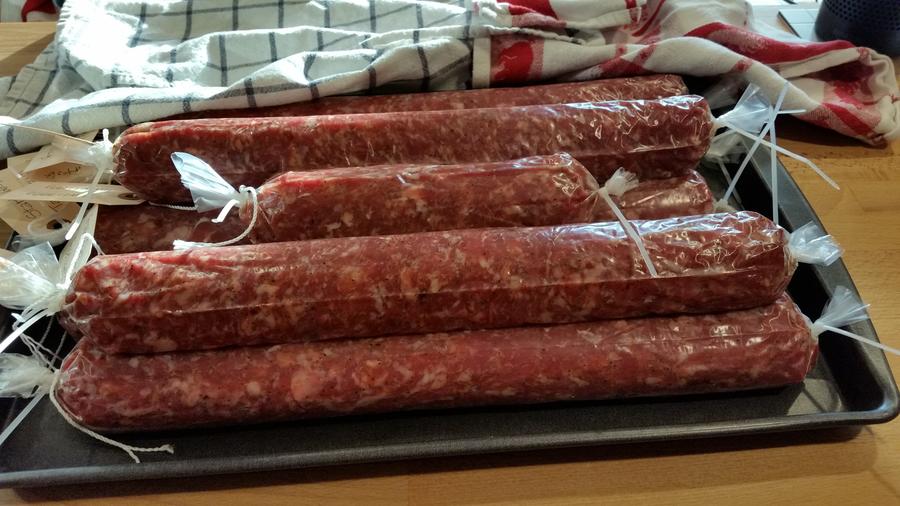The difference between cure #1 and cure #2
So, below is the recipe from UMAI.... and you are thinking of changing it..... ??????????
How about the Bactoferm T-SPX starter culture... You changing that also.. ??????????
For 5 lb recipes. UMAi Dry[emoji]174[/emoji] Soppressatta blend has nice heat from the red pepper combined with mace which is from the nutmeg family that nicely bless the flavors together. Formulated by the Sausage Master at Spark Spices, this is a traditional blend of spices that creates the flavor of soppressata.
Ingredients: Dextrose, Spices, Black Pepper, Red Pepper, Flavorings, Garlic, Mace
This blend does not contain: Salt, Instacure #2 or Starter Culture which are necessary for making dry sausage.
Usage: After mixing in Salt and Instacure #2, add the contents of the package to 5 lbs of sausage meat mix.
+++++++++++++++
UMAi Dry[emoji]174[/emoji] spice blends eliminate the need to mix individual spices and are a convenient way to formulate your dry sausage.
Each packet contains enough spice for 5 lbs of dry sausage. Simply mix the contents of the UMAi Dry[emoji]174[/emoji] Spice Packet into chilled, freshly ground meat, along with correct proportions of kosher salt, Instacure #2 and Bactoferm T-SPX Starter Culture
EDIT to add...
Bactoferm T-SPX (Pediococcus pentosaceus & Staphylococcus xylosus)
Due to the limited shelf life outside of a freezer, we can not ship this outside of North America.
For slow/mild acidification. Less acidity and no sour flavor; enhances the aromatic flavor and appearance of fermented meats.
Also assists in moisture removal and the breaking down of Nitrate into Nitrite for more efficient curing. If using T-SPX for traditional method of drying this culture will not provide food safety through lowering pH level but, it will help lower aW. Use for products needing at least one month's time for drying and do not ferment with this product over 75°F.
• Net Weight: 25g(per packet)
• Usage: 25g for 200kg(440 lbs)
• Instructions for making 10 lb. increments included.
• Storage: In Freezer (<2°F)
• Freeze Dried Culture








